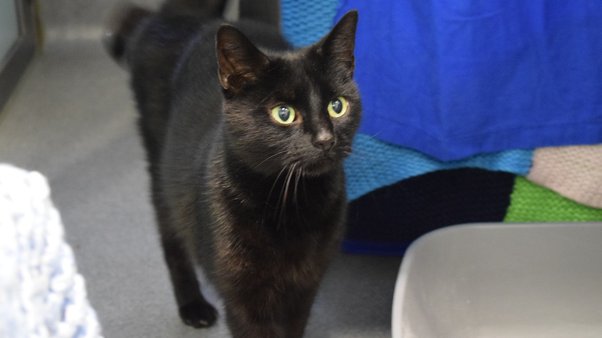When it comes to our feline companions, few topics ignite as much debate as the food we choose to feed them. Among the myriad brands available, Friskies stands out as a household name, often found lining the pantry shelves of cat owners across the globe. But as popularity swells, so too do questions about the quality and nutritional value of this well-known cat food. Is Friskies truly meeting the dietary needs of our beloved pets, or are there hidden pitfalls lurking in those colorful cans and pouches? In this article, we’ll explore the ingredients, nutritional content, and expert opinions surrounding Friskies, shedding light on whether this ubiquitous brand is a reliable choice for your feline friend, or if it’s time to consider alternatives for their health and wellbeing. Join us as we navigate the complex world of cat nutrition and discern the truth behind this popular cat food.
Table of Contents
- Understanding the Ingredients: What’s Really in Friskies Cat Food
- Nutritional Value and Health Implications for Your Feline Friend
- Evaluating Quality: Comparing Friskies with Other Cat Food Brands
- Making Informed Choices: Expert Recommendations for Cat Owners
- Q&A
- In Conclusion

Understanding the Ingredients: What’s Really in Friskies Cat Food
When delving into what makes up Friskies cat food, it’s essential to recognize the variety of ingredients utilized in their formulations. At the forefront, you’ll find meat by-products, which often include leftover animal parts like organs and bones. While some may view this as a less desirable inclusion, it can provide essential protein and nutrients. Other prominent components include cereal grains like corn or wheat, serving as a source of carbohydrates. It’s important to note that while these grains can contribute to a balanced diet, some cats may have sensitivities that can lead to digestive issues.
Friskies also incorporates a range of additives for flavor and preservation. Ingredients such as meat meal offer concentrated protein, while vitamins and minerals are included to ensure a complete diet. Here’s a quick overview of some key ingredients you might find in Friskies products:
| Ingredient | Purpose |
|---|---|
| Meat By-Products | Protein source |
| Cereal Grains | Carbohydrates |
| Meat Meal | Concentrated protein |
| Vitamins and Minerals | Complete nutrition |
| Artificial Flavors | Enhances taste |
While some ingredients may raise eyebrows among pet owners, understanding their roles can foster a more informed perspective on Friskies offerings. Furthermore, it’s crucial to consider your cat’s individual dietary needs and preferences—what works for one feline may not suit another. Always consult with a veterinarian to ensure a balanced diet for your furry companion, especially if you have concerns regarding specific ingredients.
Nutritional Value and Health Implications for Your Feline Friend
When selecting cat food, understanding its nutritional composition is crucial for your feline’s health. Friskies, known for its variety of flavors and textures, often attracts cat owners due to its affordability and availability. However, it’s essential to examine the ingredient list carefully. The product typically contains meat by-products, corn gluten meal, and various fillers, which may not provide the optimal nutrition that your cat needs. Unlike premium brands that focus on whole protein sources and fewer fillers, Friskies may fall short in delivering the high-quality protein that supports your cat’s muscle health and overall vitality.
Beyond the ingredients, the macronutrient profile of Friskies has garnered mixed reviews from pet owners. Cats are obligate carnivores, meaning their diet should primarily consist of animal-based proteins. A comparative analysis reveals that while Friskies offers a decent protein percentage, the presence of excessive carbohydrates—often derived from grains and fillers—can lead to health complications such as obesity and diabetes over time. Below is a breakdown of the nutritional components typically found in Friskies:
| Nutritional Component | Typical Percentage |
|---|---|
| Protein | 28% – 36% |
| Fat | 10% – 20% |
| Carbohydrates | 30% – 50% |
While Friskies may indeed be a palate pleaser due to its taste and variety, pet owners should weigh the long-term health implications against the immediate satisfaction it provides. Regularly feeding your cat a diet heavily reliant on low-quality ingredients may lead to insufficient nutrient intake and increased health risks. For a responsible approach to your cat’s diet, consider blending Friskies with higher-quality foods or opting for brands that emphasize whole proteins and balanced nutrition.
Evaluating Quality: Comparing Friskies with Other Cat Food Brands
When it comes to evaluating cat food, it’s essential to look beyond just one brand. Friskies is often compared with other popular brands like Purina Pro Plan, Hill’s Science Diet, and Blue Buffalo. Each of these brands has its unique formulations that cater to different dietary needs. Here are some factors to consider:
Ingredients: Quality of protein sources, presence of fillers, and artificial additives.
Nutritional Content: Balance of proteins, fats, vitamins, and minerals.
Price Point: Value for money versus quality.
Brand Reputation: Consumer reviews and recall history.
To give a clearer picture of how Friskies stands against its competitors, we can summarize key aspects in a simple table:
| Brand | Protein Source | Grain-Free | Price Range |
|---|---|---|---|
| Friskies | Meat by-products | No | $$ |
| Purina Pro Plan | Chicken, lamb | Yes | $$$ |
| Hill’s Science Diet | Chicken, turkey | Yes | $$$$ |
| Blue Buffalo | Deboned chicken, fish | Yes | $$$$ |
Ultimately, the choice of cat food should be guided by individual cat requirements, owner budget, and the importance of high-quality ingredients. Pet owners should also consider their cat’s specific health needs, as a food that works for one cat may not be suitable for another.
Making Informed Choices: Expert Recommendations for Cat Owners
When it comes to selecting the right food for your feline friend, it’s essential to navigate the myriad options with care. While Friskies is a household name and provides a broad range of products, cat owners should be vigilant about the ingredients and nutritional value of the food they choose. Expert recommendations often emphasize the importance of high-quality protein sources, the presence of essential vitamins and minerals, and the absence of fillers or artificial additives. Consider the following factors when evaluating Friskies or any cat food:
Protein Content: Look for real meat as the primary ingredient.
Avoid Fillers: Steer clear of foods high in corn, wheat, or soy.
Balance: Ensure the food provides a balanced diet, including necessary fatty acids and taurine.
Moreover, it’s crucial to understand that different cats have unique dietary needs based on their age, health status, and lifestyle. Veterinarians often recommend consulting with a pet nutritionist to tailor a diet specific to your cat’s requirements. Below is a comparison of Friskies against some other popular brands, highlighting key nutritional aspects:
| Brand | Protein (%) | Fat (%) | Fiber (%) |
|---|---|---|---|
| Friskies | 30 | 15 | 4 |
| Wellness | 40 | 18 | 5 |
| Blue Buffalo | 35 | 16 | 4.5 |
Q&A
Q1: What is Friskies and why is it so popular among cat owners?
A: Friskies is a well-known brand of cat food that offers a variety of products, including dry kibble and wet canned food in an assortment of flavors and textures. Its popularity stems from its affordability, wide availability, and the appealing taste many cats seem to love, making it a go-to option for countless cat owners.
Q2: Are there any nutrition concerns associated with Friskies?
A: While Friskies does provide some essential nutrients, there are concerns regarding the balance of ingredients. Some formulas may contain high levels of carbohydrates and filler ingredients like corn and wheat, which may not provide the optimal nutrition felines need. Cats are obligate carnivores, so a diet higher in animal proteins and lower in carbs is often recommended.
Q3: Is Friskies complete and balanced for cats?
A: Yes, Friskies products are labeled as “complete and balanced,” meaning they meet the nutritional standards set by the Association of American Feed Control Officials (AAFCO). However, some pet nutritionists and veterinarians suggest that while they meet minimum requirements, the quality of ingredients can be questionable compared to premium brands that prioritize high-quality proteins and fewer fillers.
Q4: Can Friskies cause any health issues in cats?
A: For most cats, occasional servings of Friskies won’t lead to immediate health issues. However, prolonged feeding of low-quality food with poor nutritional balance could potentially contribute to obesity, dental problems, or digestive issues over time. It’s essential to monitor your cat’s weight and health and consult with a veterinarian for tailored dietary advice.
Q5: What do veterinarians recommend regarding feeding Friskies?
A: Many veterinarians suggest using Friskies as an occasional treat or supplement to a high-quality diet rather than a primary food source. They typically recommend food with a higher protein content and fewer fillers. Always consult with your vet to determine the best diet tailored for your cat’s individual health needs.
Q6: How can cat owners ensure they are providing a balanced diet?
A: To achieve a balanced diet for your cat, it’s crucial to look for high-quality cat foods that list meat as the primary ingredient. Consider incorporating various protein sources and ensuring adequate hydration, especially if you choose dry kibble. Regular veterinary check-ups can help assess your cat’s nutritional health and make necessary adjustments.
Q7: What alternatives exist to Friskies for cat food?
A: There are many alternatives to Friskies that focus on higher-quality ingredients. Brands like Wellness, Blue Buffalo, and Royal Canin offer premium options that cater to various dietary needs. Additionally, some cat owners explore homemade diets or raw feeding, though these approaches require careful planning and knowledge to ensure nutritional adequacy.
Q8: is Friskies bad for cats?
A: The answer isn’t black and white. Friskies can be enjoyed in moderation, and many cats thrive on it without immediate issues. However, for long-term health, pet owners should consider investing in higher-quality nutrition that meets the specific dietary needs of their feline companions. As always, the best approach is to consult with a veterinarian to determine the most suitable diet for your cat.
In Conclusion
the question of whether Friskies is bad for cats is not a straightforward one. While this popular brand offers a variety of flavors and formulations that appeal to many feline palates, it’s essential for pet owners to scrutinize the nutritional content and ingredient quality to make informed decisions. Cats are unique creatures with specific dietary needs, and what works for one may not suit another. Consulting with a veterinarian and considering your cat’s individual health requirements can provide clarity in navigating the vast sea of cat food options. Ultimately, a balanced diet, tailored to your furry companion’s preferences and needs, will pave the way for a happy and healthy life. So, as you ponder the question of Friskies, remember: knowledge is key, and the best choice is always one made with care and consideration for your beloved pet.















